Explore some of the most fascinating historical destinations in the world with our exclusive trips. From the ancient ruins of Ephesus to the iconic landmarks of cities like Rome, Paris, and Athens, we offer travel options for you to experience history up close. Discover the places that shaped civilizations and embark on an unforgettable journey through world heritage. Travel with us to these historic destinations and immerse yourself in the culture and history of each place!
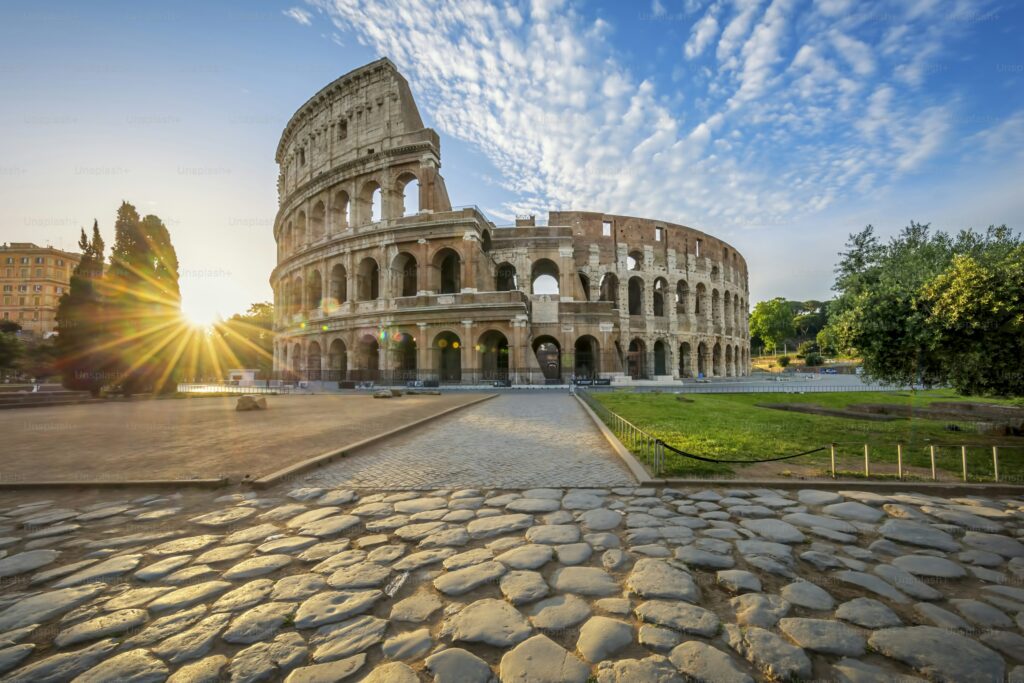
Rome
Rome is one of the most iconic cities in the world, filled with historical sites that testify to its significance as the capital of the Roman Empire and a center of Western history. Among its most famous monuments are the Colosseum, the Roman amphitheater that hosted gladiator battles and other public events, and the Roman Forum, the political and social heart of Ancient Rome, where important speeches and decisions took place. The Pantheon, a temple dedicated to the Roman gods, is a remarkable example of ancient engineering, with its concrete dome still intact. The Arch of Constantine, built to commemorate Emperor Constantine’s victory, is another symbol of the grandeur of the Roman Empire. The city also preserves the Baths of Caracalla, one of the largest thermal complexes of Ancient Rome, and the Mausoleum of Hadrian, which later became the Castel Sant’Angelo. Additionally, Rome is home to the catacombs on its outskirts, where early Christians were buried, and the imperial forums, which reveal the splendor of various Roman dynasties. With its vast archaeological heritage, Rome offers a unique immersion into the history of Western civilization.
Pompeii
Pompeii is an ancient Roman city located in the Campania region of southern Italy, which was completely destroyed and buried by the eruption of Mount Vesuvius in 79 AD. Today, it is one of the most important and visited archaeological sites in the world, offering a unique glimpse into daily life in the Roman Empire. Among the historical sites of interest are the ruins of houses and villas, which still preserve frescoes, mosaics, and everyday objects such as kitchen utensils and furniture. The Pompeii Amphitheater is one of the oldest and best-preserved in the Roman Empire, where gladiator battles and other public events were held. Another important site is the Great Theater, one of the largest and best-preserved Roman theaters, used for theater and music performances. Pompeii’s bathhouses, with separate areas for men and women, and the forum, the city’s political and commercial center, are also highlights. The city offers a fascinating view of a Roman society that was instantly preserved by a natural disaster, allowing visitors to explore the streets, buildings, and even scenes of a life abruptly interrupted.
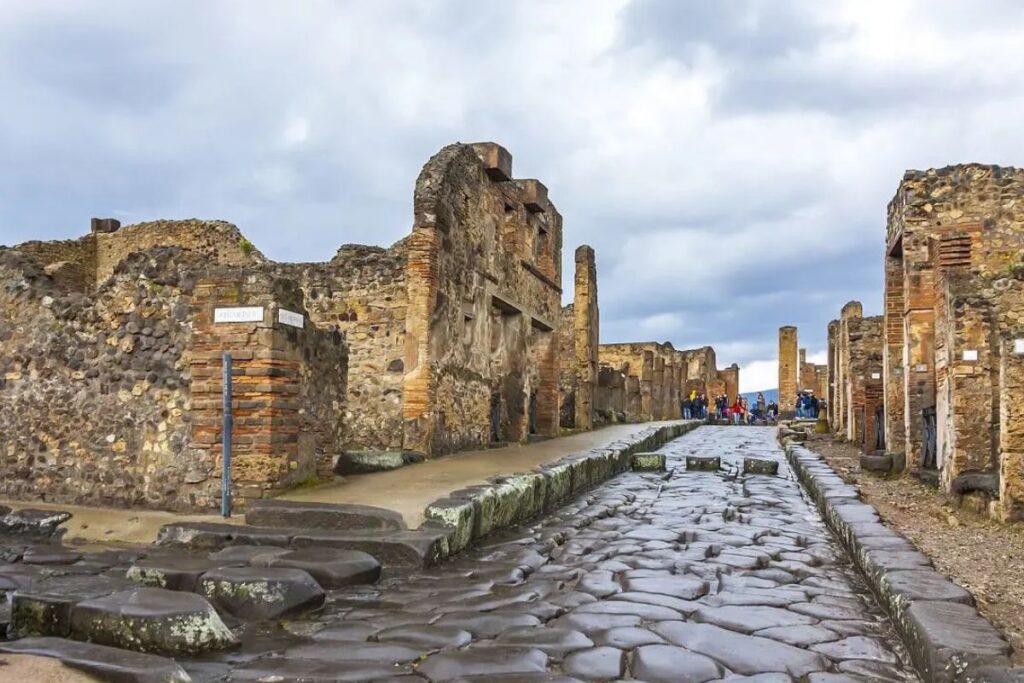
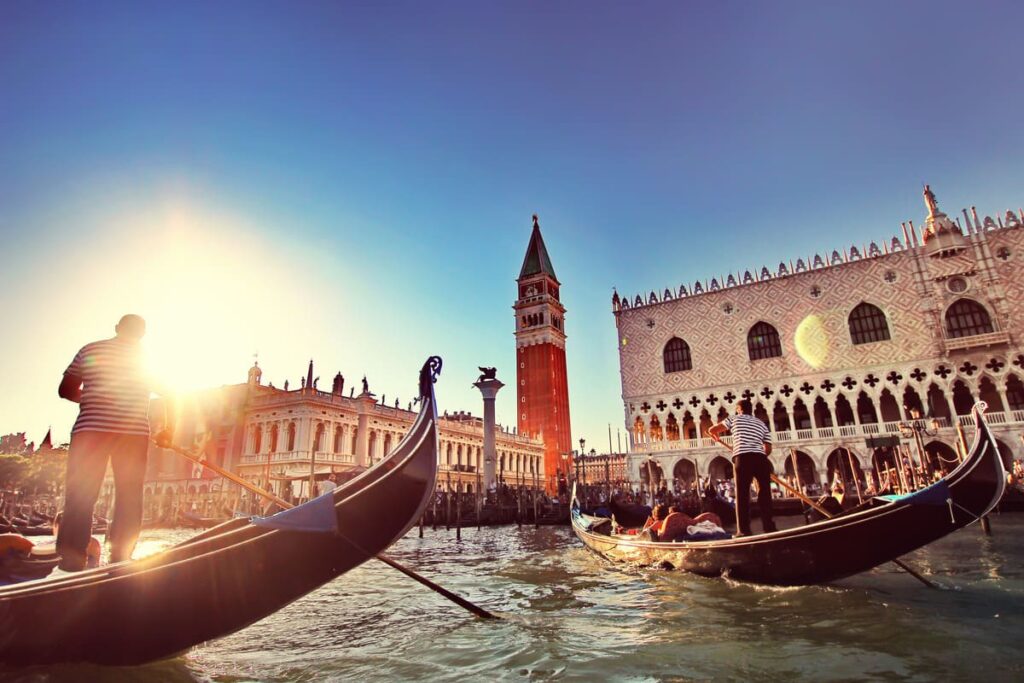
Venice
Venice is a historic city located in northeastern Italy, famous for its unique architecture and the network of canals that run through the city. Founded in the 5th century, Venice became a powerful maritime republic during the Middle Ages and the Renaissance. Among the most emblematic historical sites in Venice is Piazza San Marco, home to the imposing St. Mark’s Basilica, a notable example of Byzantine architecture. The Doge’s Palace, which was the residence of the doge and the center of the government of the Republic of Venice, is another site of great historical significance, with its richly decorated rooms and the famous Bridge of Sighs, which connects the palace to the old prisons. Rialto Bridge, one of the oldest and most famous in Venice, is a crucial meeting point for both locals and tourists, and it is a symbol of the city. Venice is also famous for the Grand Canal, which winds through the city, lined with historic buildings, many dating back to the 15th and 16th centuries. The city preserves a rich artistic and architectural heritage, with palaces, churches, and museums that testify to its grandeur as a maritime and cultural power in Europe.
Florence
Florence is a city rich in history and culture, located in the Tuscany region of central Italy. Known as the birthplace of the Renaissance, Florence was one of the leading artistic and intellectual centers of Europe during the 14th to 16th centuries. The Florence Cathedral, or Santa Maria del Fiore, with its famous dome designed by Brunelleschi, is one of the most recognizable landmarks of the city and Renaissance architecture. The Pitti Palace and the Boboli Gardens reflect the opulence of the families who ruled Florence, such as the Medici, while the Uffizi Gallery houses some of the most important works of Renaissance art, including paintings by Leonardo da Vinci, Michelangelo, and Botticelli. The Ponte Vecchio, a medieval bridge over the Arno River, is one of the city’s most famous symbols, with its old shops selling jewelry and crafts. The Palazzo Vecchio, with its imposing tower, was the center of government in Florence during the Florentine Republic. Florence is a true treasure of art, architecture, and history, and continues to attract millions of visitors who seek to immerse themselves in its Renaissance legacy.
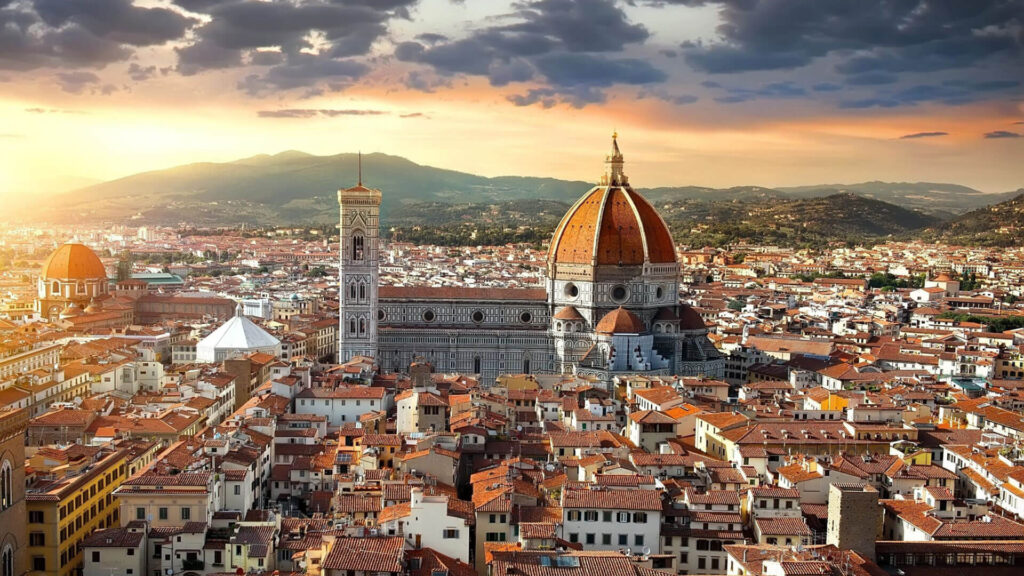
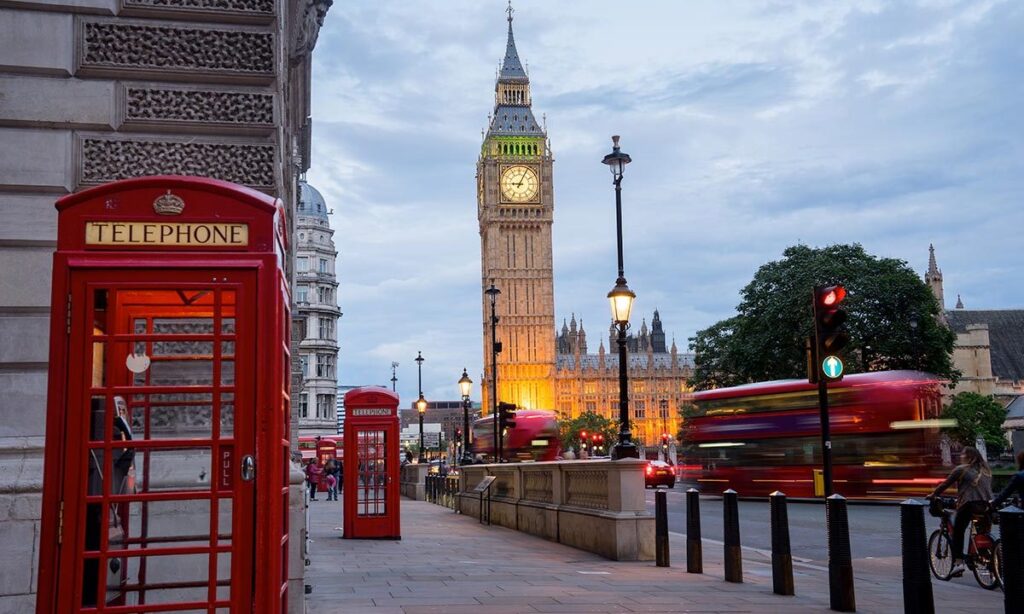
London
London is one of the most historic and cultural cities in the world, with a rich heritage that dates back over two thousand years. As the capital of the United Kingdom, London was the center of the British Empire and continues to be an important financial, political, and cultural hub. Among the historically significant sites are Buckingham Palace, the official residence of the British monarchy, and the Tower of London, a medieval castle that has served as a fortress, prison, and home to the Crown Jewels. Big Ben and the Palace of Westminster are icons of Gothic Revival architecture and also the center of British government. The British Museum, with its vast collection of historical and cultural artifacts from around the world, is one of the most important museums on the planet. St. Paul’s Cathedral, an impressive example of Baroque architecture, and Westminster Abbey, the site of royal coronations, are also must-see landmarks. London is a city where ancient history blends with modernity, offering a wide range of sites and museums that tell centuries of history.
Paris
Paris is a city with a rich history dating back to Roman times, and it has been one of the main cultural and political centers of Europe. As the capital of France, Paris played a central role in many significant historical events, such as the French Revolution and the World Wars. Among the most famous historical sites are the Notre-Dame Cathedral, a remarkable example of Gothic architecture, and the Louvre Palace, which, in addition to being the largest art museum in the world, was once a royal residence. The Eiffel Tower, built for the 1889 World Exposition, has become a global icon of the city. The Arc de Triomphe, erected in honor of France’s military victories, and the Champs-Élysées, one of the most famous avenues in the world, are also essential landmarks. Montmartre, with its bohemian history and the Basilica of Sacré-Cœur, offers a glimpse of Paris’ artistic and religious past. The city is a true open-air museum, where history, art, and culture intertwine.
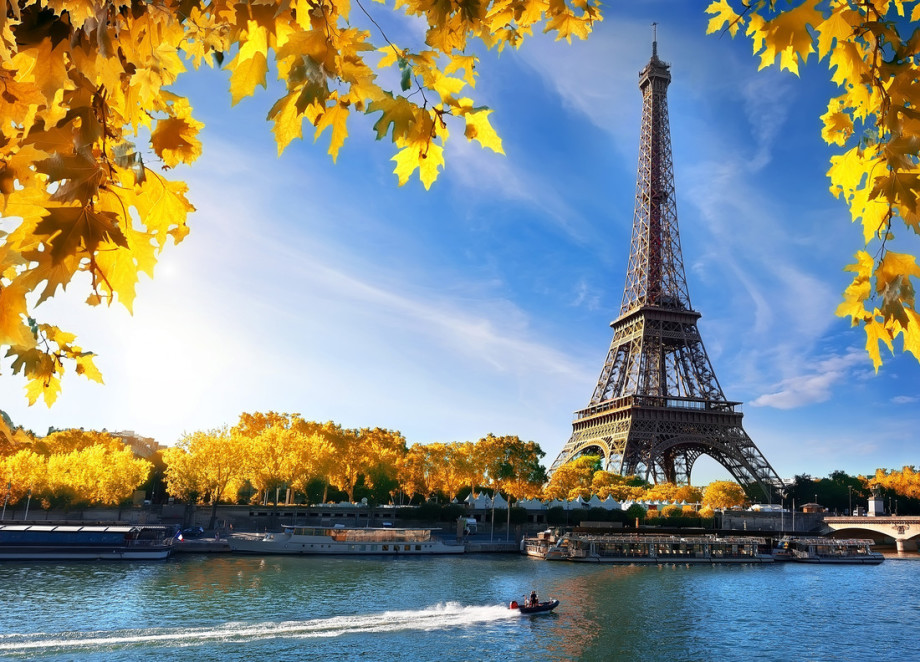
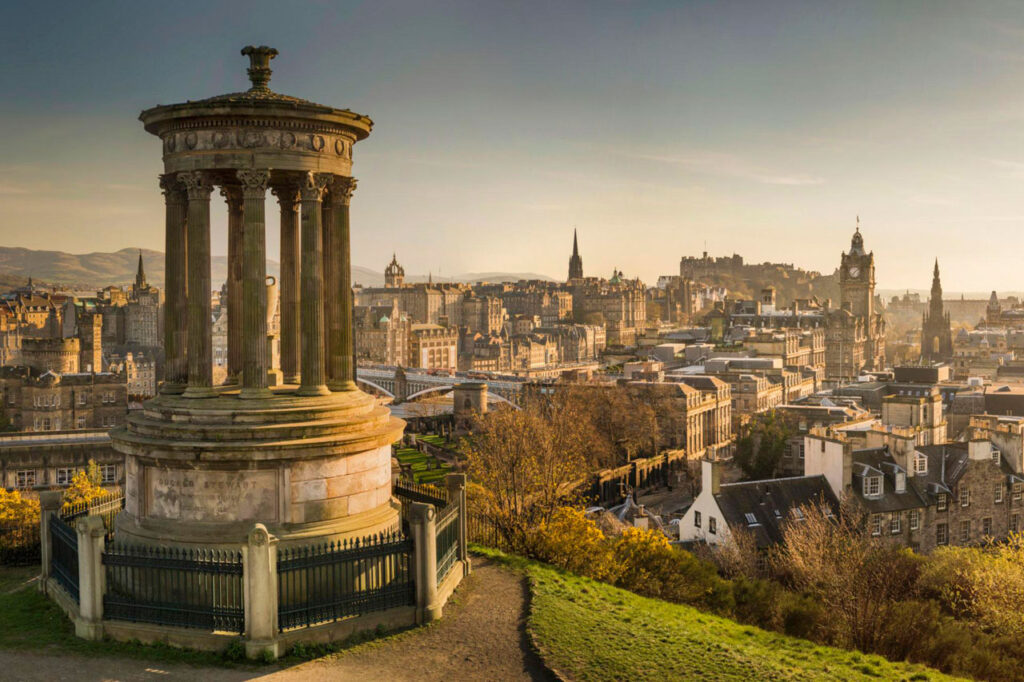
Edinburgh
Edinburgh is the capital of Scotland and a city full of history, with origins dating back to the Middle Ages. Edinburgh Castle, one of the most iconic fortresses in Great Britain, dominates the city and has been the site of battles, royal coronations, and significant historical events. The Royal Mile, which connects Edinburgh Castle to Holyrood Palace, is one of the most historic streets in the city, filled with historic buildings, traditional shops, and landmarks such as St. Giles’ Cathedral. Edinburgh is also famous for Holyrood Palace, the official residence of the British monarchy in Scotland, and Arthur’s Seat, an extinct volcano offering panoramic views of the city. The city is also known for its rich intellectual heritage, with the National Museum of Scotland and the University of Edinburgh, one of the oldest in the world. With its medieval streets and Georgian architecture, Edinburgh is a fascinating destination for those interested in history, culture, and Scottish traditions.
Madrid
Madrid is the capital of Spain and a city with a rich history dating back to medieval times, serving as an important political, cultural, and economic center of Europe. Among the most prominent historical sites is the Royal Palace of Madrid, the official residence of the Spanish royal family, an impressive example of Baroque architecture. The Prado Museum, one of the most important art museums in the world, houses a vast collection of works by artists such as Velázquez, Goya, and El Greco. Plaza Mayor, one of the city’s most iconic squares, has been the site of numerous historical events, including bullfights and public executions. Another key landmark is the Almudena Cathedral, which was completed at the end of the 20th century after more than 100 years of construction. Retiro Park, dating back to the 17th century, offers visitors a peaceful retreat with gardens and lakes. Madrid is also famous for the Puerta del Sol, the geographic center of the city, and the Gran Vía, a vibrant avenue full of shops, theaters, and historic buildings. With its rich cultural heritage, Madrid is a fascinating destination for those wishing to explore the history and art of Spain.
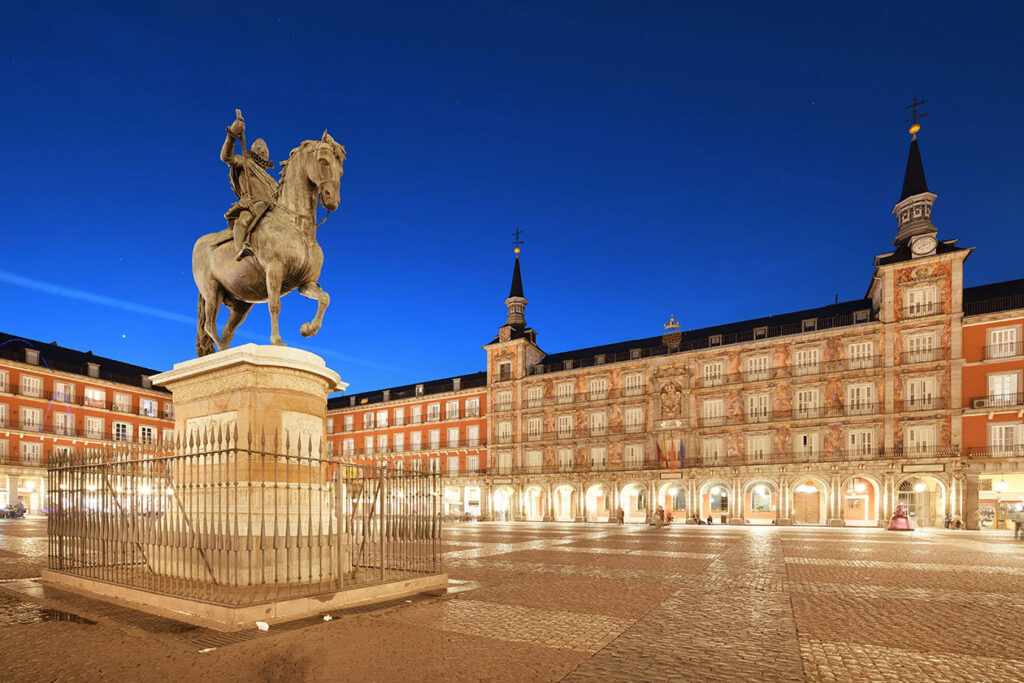

Lisbon
Lisbon is the capital of Portugal and a city with a rich history dating back to Roman times, serving as an important political, cultural, and commercial center in Europe. Among the most notable historical sites is the Jerónimos Monastery, an impressive example of Manueline architecture and a UNESCO World Heritage site, also the resting place of Vasco da Gama. The Belém Tower, also a UNESCO World Heritage site, is an iconic symbol of Lisbon, built in the 16th century to protect the city’s harbor. Pena Palace, located in nearby Sintra, is a 19th-century masterpiece of Romanticism, with unique architecture and breathtaking panoramic views. Commerce Square, located along the Tagus River, is one of Lisbon’s major landmarks, with its grand arcade and historical importance as the city’s administrative center. The Baixa Pombalina, an area rebuilt after the great earthquake of 1755, is famous for its neoclassical architecture. São Jorge Castle, atop a hill, offers a spectacular view of the city and has been an important symbol of Lisbon’s history since the Middle Ages. Lisbon is a city that blends history, culture, and a unique atmosphere, attracting millions of visitors every year.
Vienna
Vienna is the capital of Austria and a city rich in history and culture, known for its imperial past and as the center of the Habsburg Empire. Among its most notable landmarks is the Hofburg Palace, the former imperial residence, which now houses several museums, including the Kunsthistorisches Museum and the Austrian National Library. The Schönbrunn Palace, a UNESCO World Heritage site, was the summer residence of the Habsburg family and is famous for its beautiful gardens and stunning architecture. The St. Stephen’s Cathedral, an iconic symbol of the city, is a Gothic masterpiece located in the heart of Vienna. The Belvedere Palace, another example of Baroque architecture, is home to the world-renowned Klimt collection, including the famous “The Kiss.” Vienna is also home to the Vienna State Opera, one of the most famous opera houses in the world, and the Prater Park, where the historic Giant Ferris Wheel offers panoramic views of the city. With its rich musical heritage, stunning palaces, and vibrant cultural scene, Vienna remains a key destination for anyone interested in European history and culture.
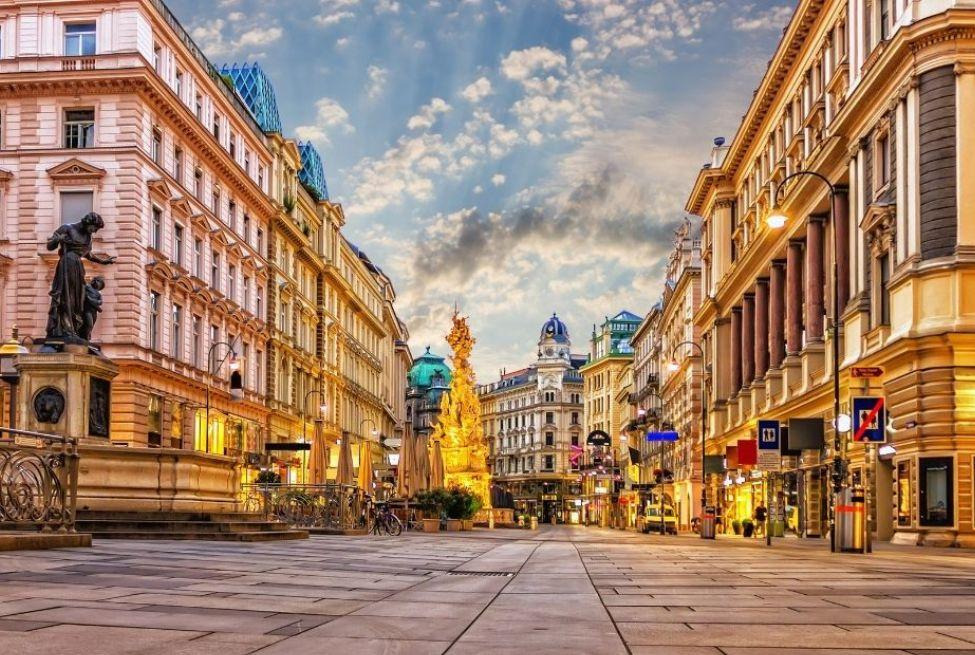
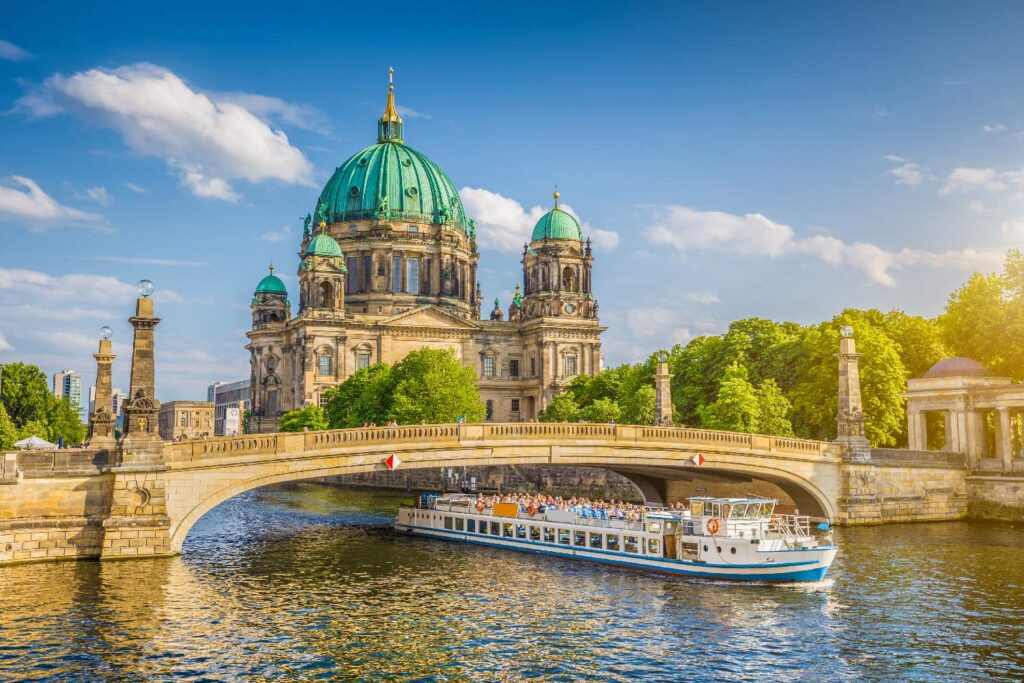
Berlin
Berlin is the capital of Germany and a city steeped in history, particularly known for its role in the 20th century. It has been a center of political change, culture, and innovation. One of the most iconic landmarks is the Brandenburg Gate, a symbol of German unity and a key historical site during the Cold War. The Berlin Wall, which divided the city for nearly three decades, is another poignant symbol of the city’s turbulent history. Parts of the wall are preserved at the East Side Gallery, an open-air gallery covered in murals. The Reichstag Building, home to Germany’s parliament, is a remarkable structure that combines historical significance with modern architecture, highlighted by a glass dome designed by architect Norman Foster. Museum Island, a UNESCO World Heritage site, houses some of the most important museums in the world, such as the Pergamon Museum and the Altes Museum. Charlottenburg Palace, the largest palace in Berlin, offers a glimpse into the grandeur of the Prussian monarchy. With its vibrant arts scene, historic sites, and modern cultural developments, Berlin is a dynamic city that blends the past with the present, offering a rich experience for visitors.
Athens
Athens is the capital of Greece and one of the oldest cities in the world, with a history spanning over 3,000 years. It is widely regarded as the cradle of Western civilization and the birthplace of democracy. The city’s most famous landmark is the Acropolis, a hilltop complex that includes the Parthenon, a temple dedicated to the goddess Athena and a symbol of ancient Greek culture. Nearby, the Temple of Hephaestus and the Erechtheion further showcase the city’s ancient architectural brilliance. The Ancient Agora, once the heart of Athenian public life, is another essential historical site, with ruins of temples, stoas, and the famous Stoa of Attalos, now housing the Museum of the Ancient Agora. The National Archaeological Museum is home to a vast collection of artifacts from ancient Greece, including the Antikythera Mechanism, an ancient analog computer. The Panathenaic Stadium, where the first modern Olympic Games were held in 1896, is another major site. With its blend of ancient history and modern vibrancy, Athens remains a timeless destination for those interested in history, culture, and philosophy
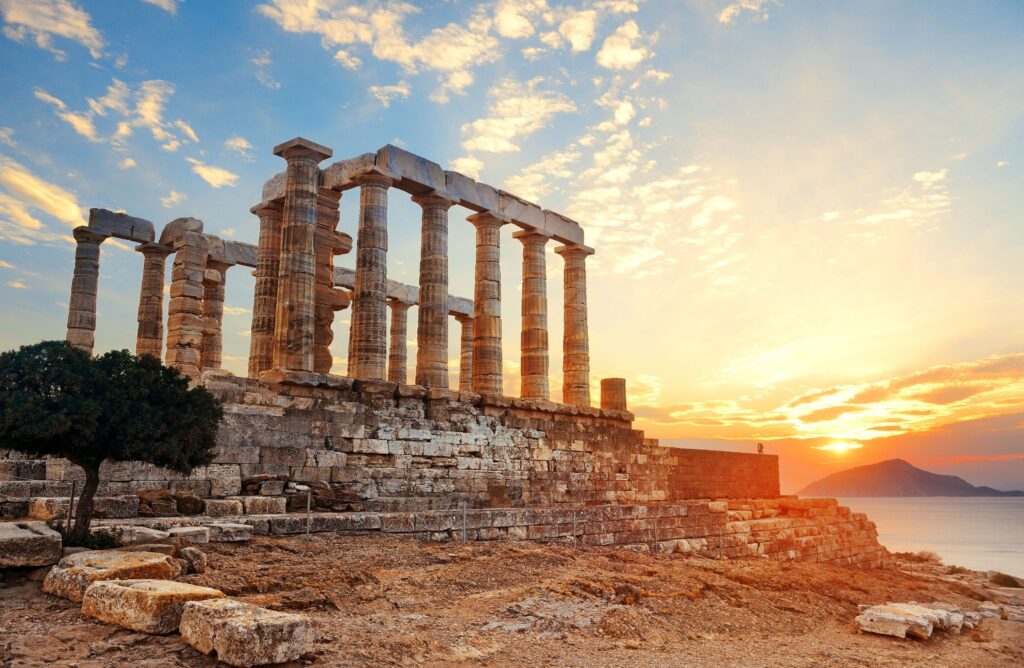
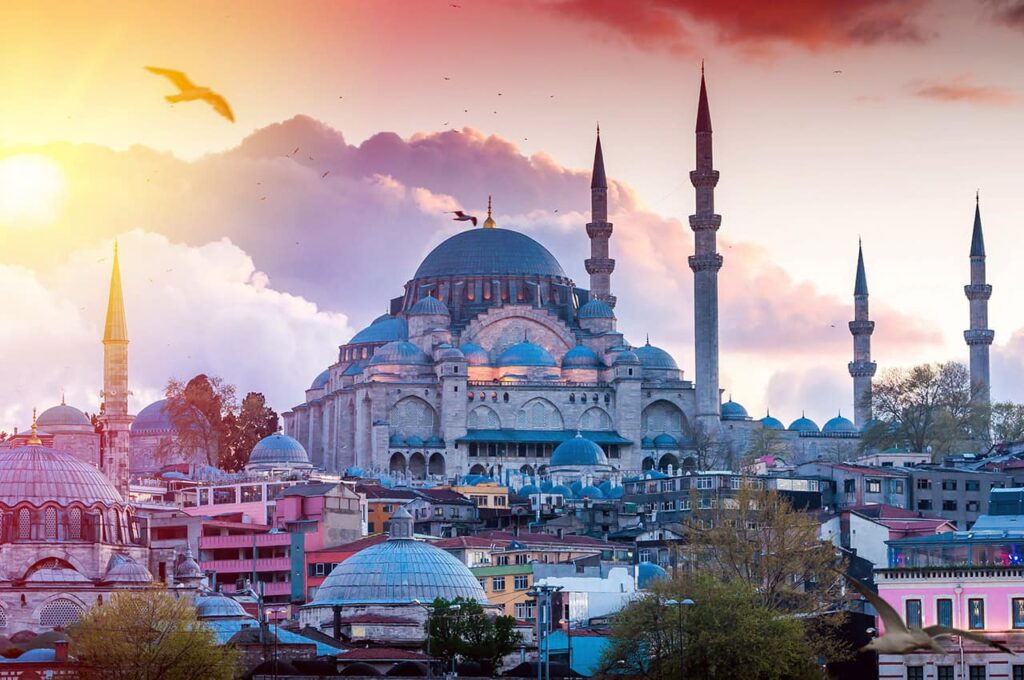
Istanbul
Istanbul is Turkey’s largest city and a cultural crossroads, rich in history and a unique blend of Eastern and Western influences. Once known as Byzantium and later Constantinople, it was the capital of both the Byzantine and Ottoman Empires. The city’s most iconic landmark is the Hagia Sophia, which has served as a cathedral, mosque, and now a museum, showcasing the city’s religious and architectural significance. The Topkapi Palace, the former residence of Ottoman sultans, is another must-see, with its opulent rooms, courtyards, and the Harem, offering a glimpse into royal life. The Blue Mosque (Sultan Ahmed Mosque), with its striking blue tiles and six minarets, is one of the most important mosques in the world. The Basilica Cistern, an underground reservoir, and the Grand Bazaar, one of the largest and oldest covered markets in the world, also reflect Istanbul’s rich historical and cultural heritage. The Galata Tower offers panoramic views of the city, while the Chora Church, with its stunning Byzantine mosaics, is a testament to the city’s deep Christian roots. Istanbul’s diverse blend of ancient monuments, modern culture, and vibrant streets makes it one of the most fascinating cities to explore in the world.
Ephesus
Ephesus is an ancient city located in modern-day Turkey, renowned for its well-preserved ruins and its importance in ancient Greek and Roman history. Once one of the largest and most prosperous cities of the ancient world, Ephesus was a major cultural, religious, and commercial hub. The city’s most iconic site is the Temple of Artemis, one of the Seven Wonders of the Ancient World, though only its foundations and a few columns remain today. The Library of Celsus, an ancient library that once housed thousands of scrolls, is another stunning structure, showcasing impressive Roman architecture. The Great Theatre of Ephesus, capable of holding 25,000 spectators, is one of the best-preserved ancient theatres and is still used for performances today. The Ephesus Archaeological Museum displays many of the city’s artifacts, including statues, inscriptions, and mosaics. The Curetes Street and the Roman Baths offer a glimpse into the daily life of the city’s inhabitants. Ephesus is also important in Christian history, as it is believed to be the home of the House of the Virgin Mary and the site where the Apostle John wrote his Gospel. The city’s historical significance, combined with its remarkable ruins, makes Ephesus a must-visit destination for history enthusiasts.

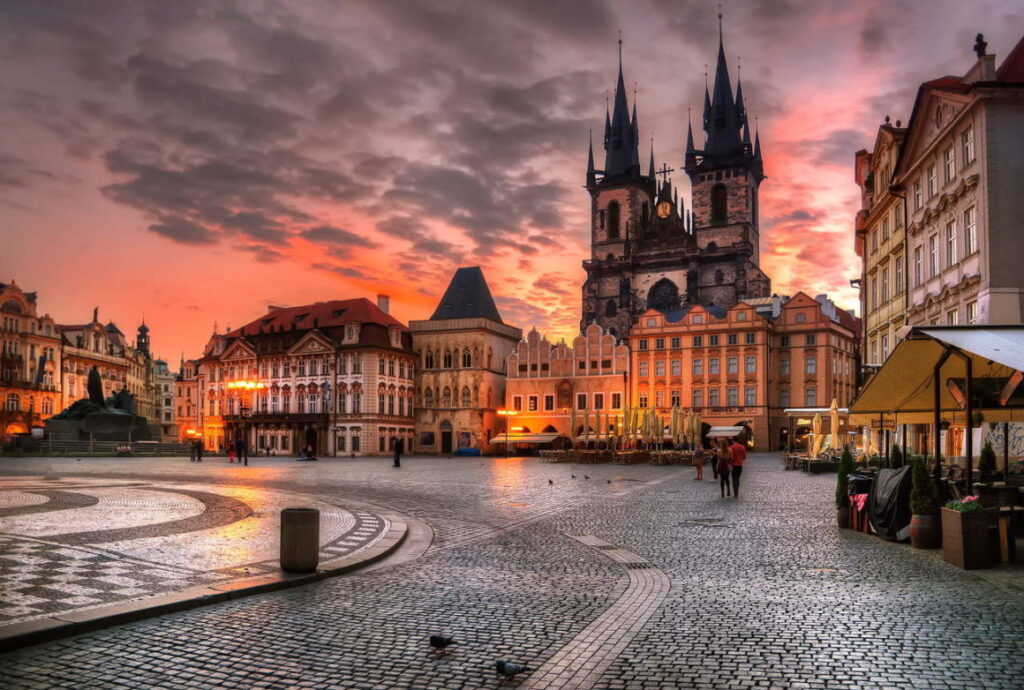
Prague
Prague is the capital of the Czech Republic and one of the most beautiful and historically rich cities in Europe. Known as the “City of a Hundred Spires” for its stunning skyline of Gothic and Baroque architecture, Prague is a city that combines medieval charm with modern vibrancy. The Prague Castle, a vast complex that has been the seat of the Czech kings, emperors, and presidents, is one of the largest ancient castles in the world and a central landmark of the city. The St. Vitus Cathedral, located within the castle, is a masterpiece of Gothic architecture and home to the Czech crown jewels. The Charles Bridge, a historic stone bridge that crosses the Vltava River, is lined with statues of saints and offers stunning views of the city’s old town. Old Town Square, with its famous Astronomical Clock and colorful buildings, is the heart of Prague’s medieval district. The Jewish Quarter, with its synagogues and the Old Jewish Cemetery, provides a glimpse into the city’s rich Jewish history. Wenceslas Square is another key site, historically significant as the location of many pivotal events in Czech history. With its stunning architecture, rich history, and vibrant cultural scene, Prague remains a must-visit destination for history and architecture lovers.
Budapest
Budapest is the capital of Hungary and one of the most beautiful cities in Europe, known for its dramatic architecture and rich history. Split by the Danube River, the city is often referred to as the “Paris of the East” for its stunning buildings and vibrant cultural scene. The most iconic landmark is the Buda Castle, a historic castle and palace complex that once housed Hungarian kings and now hosts museums and galleries. The Parliament Building, a magnificent example of Gothic Revival architecture, is one of the largest parliamentary buildings in the world. The Fisherman’s Bastion, a neo-Romanesque terrace with panoramic views of the city, offers some of the best views of the Danube and the Parliament Building. St. Stephen’s Basilica, named after the first king of Hungary, is a stunning example of neoclassical architecture. The Széchenyi Thermal Bath, one of the largest spa complexes in Europe, reflects Budapest’s tradition of thermal baths, which have been in use since Roman times. Heroes’ Square, with its monumental statues of national leaders, and the Great Market Hall are also notable landmarks. With its blend of history, architecture, and culture, Budapest is a captivating destination for those interested in exploring the heart of Hungary.
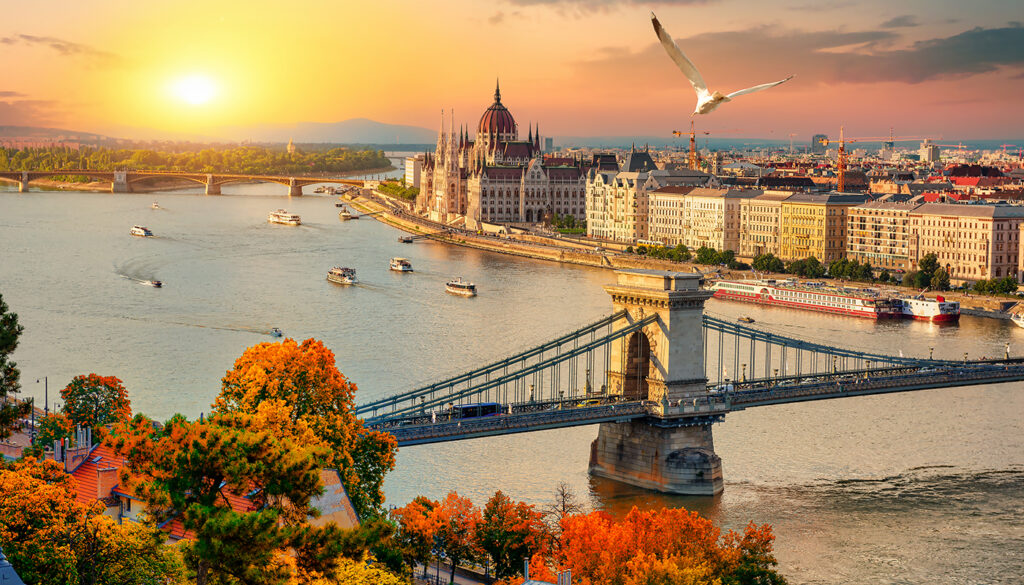
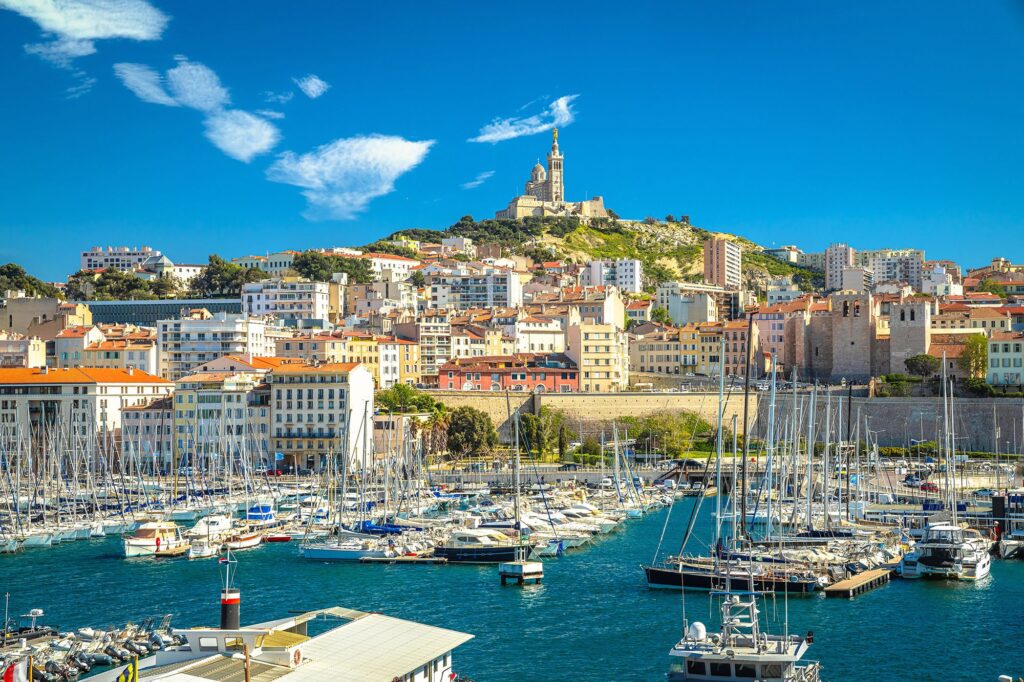
Marseille
Marseille is France’s second-largest city and an important Mediterranean port with a rich history dating back to ancient times. Founded by Greek sailors in 600 BC, it is one of the oldest cities in Europe. One of the most iconic landmarks in the city is the Basilica of Notre-Dame de la Garde, perched on a hill overlooking the city, offering stunning views of the coastline. The Vieux-Port (Old Port), the heart of the city, has been a trading hub for over 2,600 years and remains a vibrant area full of cafes, shops, and seafood restaurants. The Château d’If, located on a small island off the coast, is famous for its role in The Count of Monte Cristo and was once a prison. The Palais des Congrès and MuCEM (Museum of European and Mediterranean Civilizations) reflect the city’s cultural evolution, while the Calanques National Park, a rugged coastal area with beautiful cliffs and turquoise waters, showcases the natural beauty of the region. The Saint-Victor Abbey, a historic Benedictine monastery, and the La Vieille Charité, a baroque building now housing museums, offer a glimpse into the city’s past. With its vibrant mix of cultures, historical sites, and beautiful coastal scenery, Marseille is a dynamic destination for history and culture enthusiasts.
